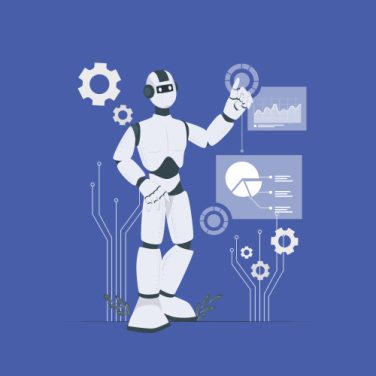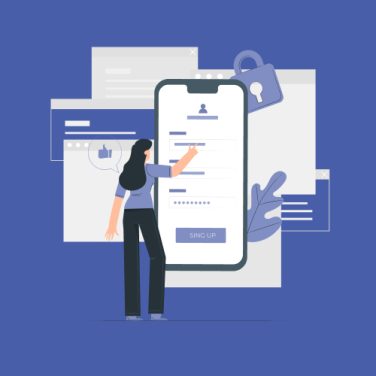In the HR technology landscape of 2025, unified HCM suites dominate over point solutions.
Organisations are investing in integrated platforms that embed AI recruitment software alongside modules for payroll, performance management, and learning.
This integration reduces data silos, ensures seamless candidate data flow, and supports continuous improvement through machine learning.
Ethical AI frameworks are also incorporated to reduce bias and ensure compliance across global hiring processes.
As the demand for uninterrupted hiring experiences grows, HR leaders prioritise tools that deliver end-to-end automation, robust analytics, and conversational AI support, all within a single ecosystem.
The role of AI in digital HR transformation
AI recruitment software excels at automating repetitive HR tasks, freeing HR professionals to focus on high-value strategic initiatives. Mundane activities like resume parsing, interview scheduling, and candidate pre-screening are handled by intelligent algorithms that learn over time.
This automation reduces administrative workload, minimises human error, and accelerates the overall recruitment cycle, enabling HR teams to dedicate more resources to employer branding, talent engagement, and retention strategies.
- Automated resume screening and keyword matching
- Intelligent interview scheduling and reminders
- Chatbot-driven candidate engagement
Machine learning integration within AI recruitment software drives precise candidate matching by analysing historical hiring data alongside real-time applicant profiles. Predictive talent forecasting uses algorithms to anticipate skill gaps and upcoming staffing needs.
By continuously refining models based on hiring outcomes, organisations can proactively build talent pools for critical roles, reducing time-to-fill and improving quality-of-hire.
Beyond recruiting, AI impacts every stage of the employee lifecycle. From automated onboarding workflows and digital paperwork completion to performance monitoring and succession planning, HR analytics tools embedded in AI platforms provide insights that optimise workforce development.
Conversational AI interfaces offer instant business answers, enabling managers to query recruitment metrics or demographic trends without navigating complex dashboards. This holistic approach transforms HR into a strategic partner that drives business growth.
Understanding AI recruitment software
AI recruitment software provides an end-to-end platform for sourcing, screening, and managing candidates through the hiring funnel. Core components include algorithmic resume parsing, natural language processing for candidate evaluation, predictive fit scoring, and automated communication workflows.
Embedded analytics modules track key performance indicators, while machine learning continuously optimises matching based on hiring outcomes. Integration with existing HR systems ensures that candidate data flows securely into the broader HRIS, supporting seamless reporting and compliance.
Furthermore, screening and evaluation processes are fully automated. Intelligent parsers extract relevant skills and experience, while customisable assessment tests evaluate technical competencies.
Automated evaluation workflows assign fit scores, and preconfigured email templates guide candidates through interview scheduling and onboarding steps. This level of automation accelerates time-to-hire and minimises manual intervention, allowing recruiters to focus on high-value candidate engagement.
Benefits of an integrated approach
- Unified candidate data eliminates duplicate records and data silos
- Consistent user experience across recruitment and HRIS modules
- Real-time visibility into hiring metrics through unified dashboards
- Reduced implementation time compared to point solution integrations
Standalone recruitment tools often require complex API integrations and bespoke connectors, increasing maintenance overhead.
In contrast, integrated HCM modules within MiHCM Lite or Enterprise provide out-of-the-box connectivity, automatic updates, and unified security models. This cohesion reduces IT complexity and accelerates ROI, delivering end-to-end hiring processes embedded directly within the HR technology landscape.
Moreover, integrated solutions like MiHCM Data & AI enable continuous improvement by feeding recruitment outcomes back into machine learning models. Built-in ethical AI frameworks ensure regular bias audits and compliance with global regulations, fostering fair candidate evaluation.
Key HR analytics tools: From data collection to insights
| Metric | Description | Insight |
|---|---|---|
| Time-to-Hire | Average days from requisition to offer acceptance | Identifies bottlenecks in sourcing or interview stages |
| Applicant-to-Hire Ratio | Number of applicants per successful hire | Measures recruitment efficiency |
| Offer Acceptance Rate | Percentage of offers accepted | Assesses competitiveness of compensation and candidate experience |
| Diversity Ratio | Representation across gender, ethnicity, and other demographics | Tracks progress toward inclusion goals |
Integrating AI recruitment software into your HRIS
Integrating AI recruitment software into an existing HRIS requires a structured approach to ensure seamless data flow and minimal disruption.
Organisations typically begin by establishing API connections between the recruitment module and core HR systems such as MiHCM Enterprise or Lite.
Next, data mapping aligns candidate, requisition, and hiring manager fields to guarantee consistency. Workflow configuration automates handoffs, notifications, and approvals, creating an end-to-end recruitment process that accelerates time-to-hire and reduces manual tasks.
- Establish secure API connections between the two systems.
- Define and map data fields for candidates, job requisitions, interview feedback, and offer details.
- Configure recruitment workflows, approval chains, and notification rules.
- Perform data validation and transformation to maintain data quality and integrity.
- Conduct unit and integration testing to identify and resolve errors in field mappings.
- Validate end-to-end candidate journeys, from application submission to onboarding completion.
Technical checklist for integration
- Verify API authentication and permission scopes
- Confirm field mappings and data transformation logic
- Set up event triggers for status updates and notifications
- Test error handling and rollback procedures
- Enable conversational AI access for recruiter queries
Once the technical foundation is in place, HR teams must be trained on the new AI-driven workflows and governance policies. Training should cover the use of the Seamless Recruitment Process feature, which automates candidate screening and interview scheduling.
Teams learn to interpret predictive analytics outputs and to use Instant Business Answers via Conversational AI for on-demand recruitment metrics. Clear governance guidelines ensure compliance with data privacy regulations and ethical AI standards.
By following this integration roadmap, organisations achieve streamlined end-to-end HR operations and accelerated time-to-hire.
The combined capabilities of MiHCM’s modules deliver a unified candidate experience and real-time visibility into hiring pipelines. Structured training and governance minimise risk and empower HR professionals to leverage advanced recruitment automation confidently.
Best practices for bias mitigation and ethical AI
Bias mitigation and ethical AI are essential when deploying AI recruitment software.
Unchecked algorithmic bias can perpetuate systemic inequalities, damage employer brand, and expose organisations to legal risks. Implementing robust governance practices ensures fairness, transparency, and compliance with evolving global regulations.
The following best practices guide HR teams in maintaining ethical AI standards throughout the recruitment process.
- Identify potential biases in training data by auditing historical hiring records for underrepresented groups, skewed performance outcomes, or exclusionary keywords. Apply data sampling techniques to ensure diverse representation and minimise skew.
- Implement regular audits and human-in-the-loop reviews to validate algorithmic decisions. Schedule quarterly model performance assessments, comparing AI-driven candidate shortlists against manual selections. Adjust parameters or retrain models when bias thresholds are exceeded.
- Maintain compliance with global regulations by aligning AI practices with GDPR, EEOC guidelines, and local labour laws. Document data handling policies, conduct impact assessments, and update privacy notices. Establish an AI ethics committee to oversee policy enforcement.
Organisations should also provide transparency to candidates by explaining AI’s role in screening and evaluation. Offering appeal mechanisms and contact points for feedback fosters trust and accountability.
Continuous monitoring of AI performance metrics helps detect drift or emerging biases over time. HR data analysts can leverage HR analytics tools to track demographic distributions and flag anomalies for investigation. By instituting these practices, HR leaders ensure that AI recruitment software supports equitable hiring and upholds corporate values.
Incorporating these practices reduces legal exposure, enhances candidate trust, and supports sustainable talent acquisition strategies.



